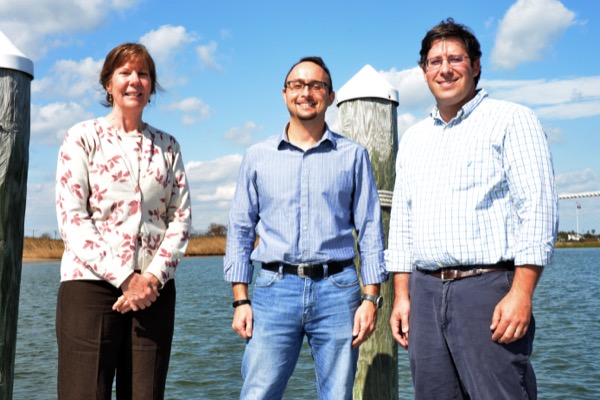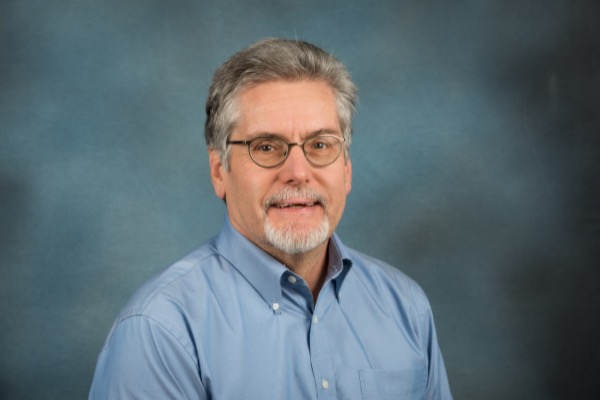New NOAA funding
UD scientists receive federal funding to study harmful algal blooms
11:28 a.m., Oct. 15, 2015--University of Delaware marine scientists Kathryn Coyne and Mark Warner have received new funding from the National Oceanic and Atmospheric Administration (NOAA) to study harmful algal blooms — a scientifically complex and potentially economically damaging coastal issue.
Each year, outbreaks of toxic algal blooms threaten fisheries, public water supplies and tourism in coastal communities throughout the United States.
Research Stories
Chronic wounds
Prof. Heck's legacy
Armed with $1.3 million in new funding from NOAA’s National Centers for Coastal Ocean Science (NCCOS), over the next three years Coyne, a biochemical ecologist, and Warner, an algal physiologist, will lead two separate projects.
Coyne will investigate a promising algicide that specifically targets dinoflagellate algae, which are among the most toxic harmful algal bloom species (HABs). Warner will explore how climate change will affect harmful and nonharmful algal blooms and, in turn, how algal blooms will affect coastal ecosystems and the marine organisms that live there.
A total of 12 research projects nationwide were funded by NCCOS. UD is one of only two institutions selected to lead two projects.
What are HABs?
Phytoplankton are microalgae that form the base of the marine food chain. Phytoplankton play an important role in assimilating nutrients in the water, while providing food for a wide range of sea creatures, from copepods and shrimp to finfish and other larger species.
A harmful algal bloom (HAB) can occur when some species of phytoplankton grow out of control in waterways such as rivers, lakes, marshes or the ocean. When this happens, the algal overgrowth may produce toxins that can be transferred up the food chain and kill fish, compromise shellfish and sicken birds, mammals, even humans.
While not all harmful algal blooms are toxic, when they bloom in high numbers and then suddenly die (known as a “bloom crash”) it can sometimes cause oxygen levels in the water to fall to dangerous levels, a phenomenon known as hypoxia.
Dinoflagellates are among the most toxic HAB species. They bloom worldwide and make up the majority of HAB species capable of producing toxins. Costs associated with monitoring, lost revenue to fisheries and human health related impacts can reach into the tens of millions of dollars for a single dinoflagellate bloom.
Coyne’s new project builds on previous work that investigated a bacteria commonly found in coastal environments. In laboratory testing, the bacteria, called Shewanella, produced an unidentified compound that inhibited the growth of or killed dinoflagellate algae, while having no effect on other phytoplankton species.
Now, in collaboration with co-investigators Warner, Jonathan Cohen and Timothy Targett, Coyne will identify and characterize the compound produced by the algicidal bacteria, then test the algicide against other ecologically or economically relevant organisms present in the Delaware Inland Bays, such as young fish, crab larvae and copepods.
“If we can demonstrate that the algicide doesn’t negatively impact other important species in the food chain, we may be able to use it to mitigate a harmful dinoflagellate bloom or avoid them altogether by applying the algicide as a preventative measure,” said Coyne, an associate professor in the School of Marine Science and Policy, which is housed in the College of Earth, Ocean, and Environment.
Climate change and algae
Global climate change is expected to have a profound impact on the ocean’s biogeochemistry, nutrient cycling and biological processes, and species inhabiting coastal ecosystems are expected to be among the most vulnerable to these changes.
Warner’s study focuses on the potential effects of ocean acidification and temperature change on the physiology of harmful and nonharmful algae. In particular, Warner’s research team, which includes Coyne, Cohen and collaborators at University of Maryland and Salisbury University, will focus on understanding how climate change effects will impact micro- and meso-zooplankton grazers that rely on algae for food.
Like phytoplankton, zooplankton are key to the marine food web. Ranging in size from small copepods the size of a grain of rice to large jellyfish, zooplankton in the Delaware Bay contain the larvae of commercially important species, including oysters, crabs, shrimp and various finfish, and are considered an important measure of fishery sustainability.
Warner’s group will grow algae under elevated carbon dioxide and temperature levels expected by the year 2100, and then feed the algae to copepods grown under the same conditions.
“We know from previous work that some harmful algae found in the Delaware Inland Bays can produce more toxins when they are deprived of nutrients, such as phosphorous or nitrogen, than when they are nutrient rich,” said Warner.
“We are interested in whether these biochemical changes in the algae affect copepod eating the algae, which could indicate higher toxicity, and whether it affects copepod ability to grow and reproduce, which could alter the complex balance of the fragile marine ecosystem.”
About the professors
Associate marine science professor Kathryn Coyne is a biochemical ecologist with a focus on algal species. Most of her research involves understanding how algal species interact with each other and with their environment at the cellular level, specifically looking at molecular (RNA and DNA) and biochemical responses to change.
Mark Warner, a marine science professor, is an algal physiologist. His main research interest is the physiology and ecology of algae, as well as algal-invertebrate symbioses, and climate change.
Jon Cohen, marine science assistant professor, studies the physiology and behavior of marine animals, particularly copepods and larval invertebrate species. He serves as co-principal investigator on both projects described above.
Tim Targett is a professor of marine science and co-principal investigator on Coyne’s project. He is an ichthyologist with interests in the ecology of estuarine and coastal marine fish. His research examines the physical and biological processes that impact fish feeding, growth and survival; essential fish habitat and recruitment processes; and the impacts of coastal habitat alteration on fish and food webs.
Article by Karen B. Roberts












